Normal Ending Sounds Worksheets for Ages 4-8
5 filtered results
-
From - To
Explore our engaging Normal Ending Sounds Worksheets designed for children ages 4 to 8! Ideal for early grade learners, these printable worksheets focus on enhancing phonemic awareness by helping kids identify and practice ending sounds in words. Whether at home or in the classroom, our resources encourage independent learning through fun exercises that foster a love for reading. Each worksheet features vibrant illustrations and a variety of activities to hold young learners' attention while strengthening their language skills. Perfect for children starting their reading journey, these worksheets will help them build a solid foundation in phonics. Start learning today!
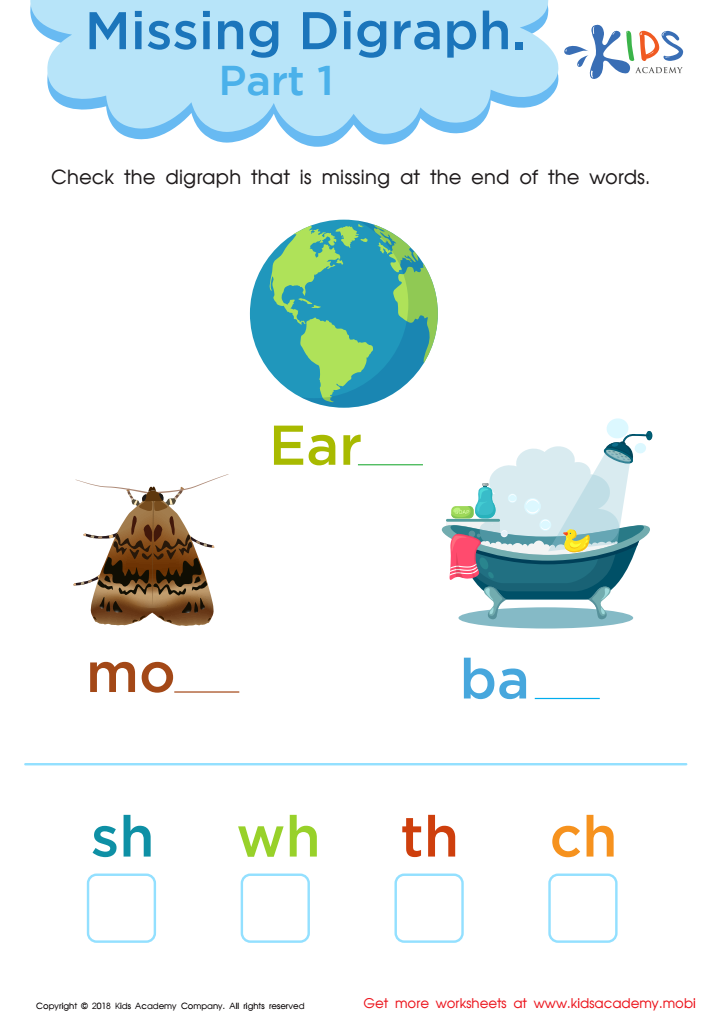

Missing Digraph: Part 1 Worksheet
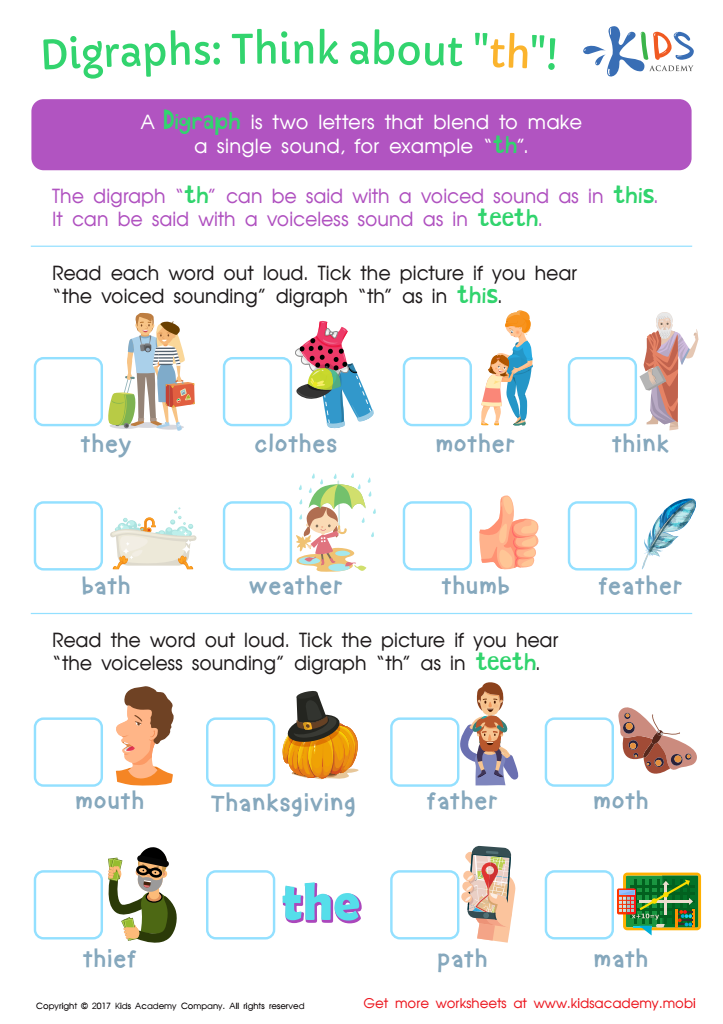

Digraphs: Think About "th" Worksheet
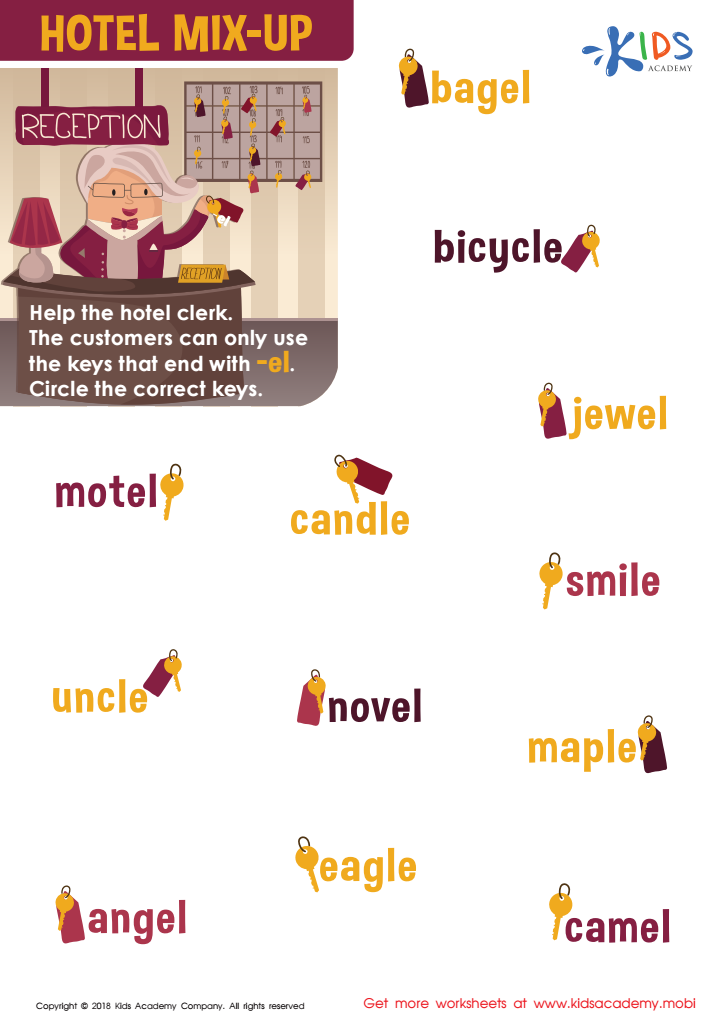

Hotel Mix-up Worksheet
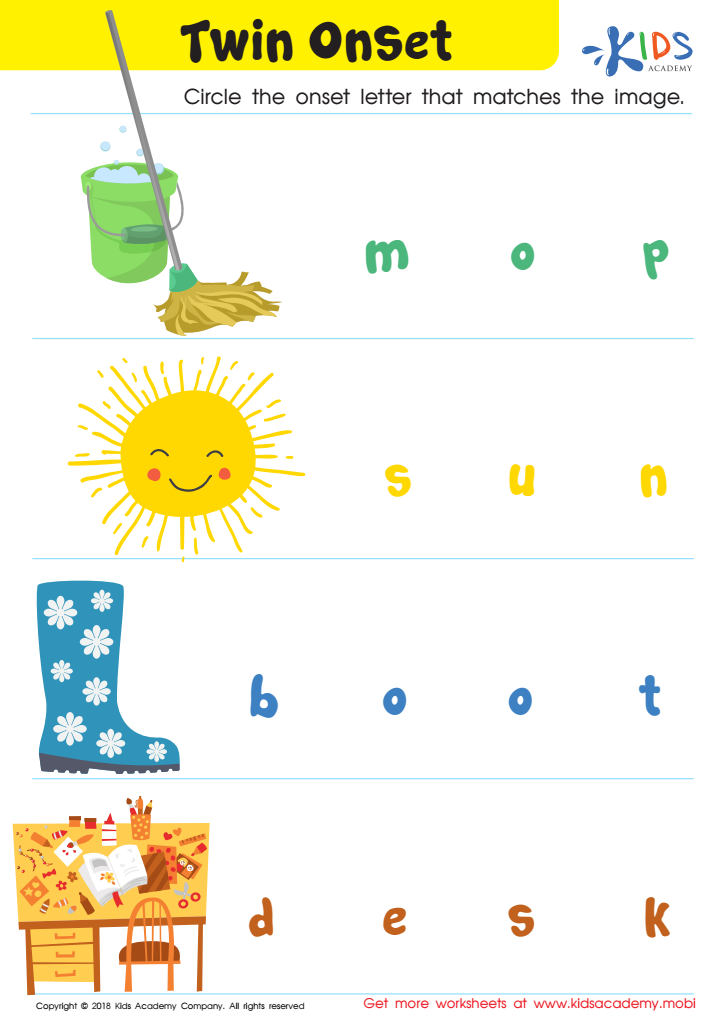

Twin Onset Worksheet
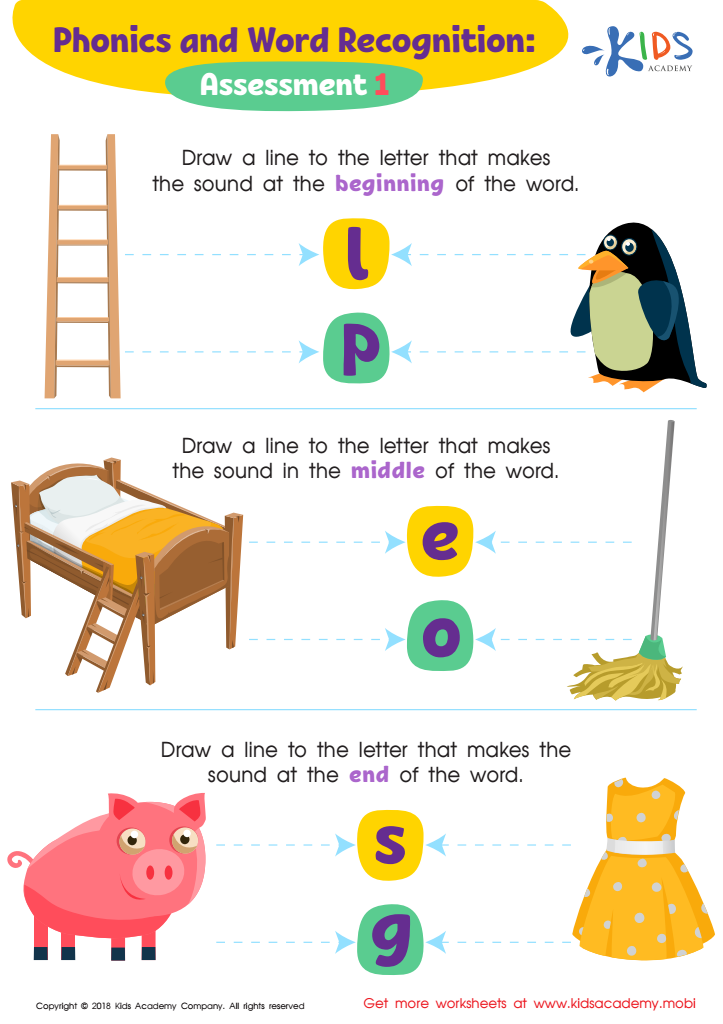

Phonics and Word Recognition: Assessment 1 ELA Worksheet
Normal ending sounds are crucial for children's phonemic awareness, which forms the foundation of their reading and writing skills. For children aged 4-8, understanding these sounds helps in developing their ability to decode words, spell accurately, and ultimately, read fluently. When kids grasp normal ending sounds, they become more confident in their communication abilities, which positively impacts their literacy development and overall academic performance.
Parents and teachers should care about normal ending sounds because they are essential for language development. Engaging activities that focus on these sounds, such as group games or storytelling, foster a love for language in children. These experiences also enhance listening skills, critical for effective verbal communication.
Moreover, teaching normal ending sounds supports broader educational goals, such as enhancing vocabulary and encouraging critical thinking. By making phonics fun and engaging, teachers and parents can create a positive learning environment that motivates children to practice. For instance, when children can recognize patterns in sounds, they are more likely to experiment with their language in writing and conversation.
Ultimately, early attention to normal ending sounds lays a strong linguistic foundation, paving the way for successful literacy skills that will benefit children throughout their educational journey.

 Assign to My Students
Assign to My Students



















